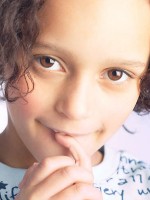|
|
|

Children and lice - Something Else to Bug You
By Bonnie Kuehl, PhD
When you send your children to school, there is a good chance that they will be exposed to head lice - its about that simple. lice are wingless bugs that live in hair. lice feed off blood in the skin and are about the size of a sesame seed. Contrary to popular belief, lice prefer clean loose hair making girls particularly susceptible. lice spread from one human host to another through direct contact or by way of a shared piece of clothing or personal item. Fleece clothing is particularly effective at transmitting lice. Back-to-school is always a peak period for lice. For information on identifying lice, go to lice.ca
The most common sign that a child has lice is an itchy head or neck and finding lice or their eggs (nits) in the hair. It can take up to six weeks after an infestation for the itchy symptoms to appear; which can make treatment difficult and slow.
Unfortunately, it is almost impossible to protect your child from lice if there is an infestation in the classroom or among their peers. Early detection is key. Keeping long hair in braids or tied up can help by avoiding direct contact with the hair of an infected person; as well, using leave-in conditioners or other styling products may help by making the hair harder for the lice to grasp.
lice usually are first seen in the nape of the neck and behind the ears. If lice or lice eggs are found on the child following some simple guidelines can usually clear up the infestation as well as avoid spreading the lice to other children.
- A very fine comb (you can buy one made for the purpose) can be used to remove lice and nits. Try to remove all the eggs that are close to the skin. Repeat every other day for two weeks.
- Treat the scalp and hair with insecticide (a medicated anti-lice treatment). There are a number available including R&C™ 2in 1 Shampoo+Conditioner (a single-step product)- Kwellada-P® Creme Rinse- Nix™ Creme Rinse. Follow the instructions carefully. Combine with manual nit removal. Click on http://www.lice.ca/treatment/permethrin_pyrethrin_work.html to learn more about how these treatments work and what precautions you should take.
- Bed linen, pillow cases, towels and clothing should all be washed in water that is at least 50 degrees Celsius and dried in a hot dryer for at least 20 minutes.
- Any plush toys should be stored in a sealed plastic bag for two weeks.
- Children should be kept home until the lice and eggs are gone.
Unfortunately most school-aged children will come into contact directly or indirectly during their academic career. The key to avoiding an ongoing lice epidemic in the classroom is early detection (many schools have parent run "nit detective" programs) and prompt, thorough treatment. lice are annoying but not known to transmit any other diseases.
About the author:
Bonnie Kuehl, PhD, Experimental Therapeutics/Cancer Biology, University of Toronto/Ontario Cancer Institute, and an Honours BSc in Biochemistry, University of Guelph. Post-doctoral Fellowships in the laboratories of Sir Professor David Lane, Scotland, U.K. and Dr. Silvia Bacchetti, McMaster University. Key areas of interest include biochemistry as well as cell and molecular biology.
|